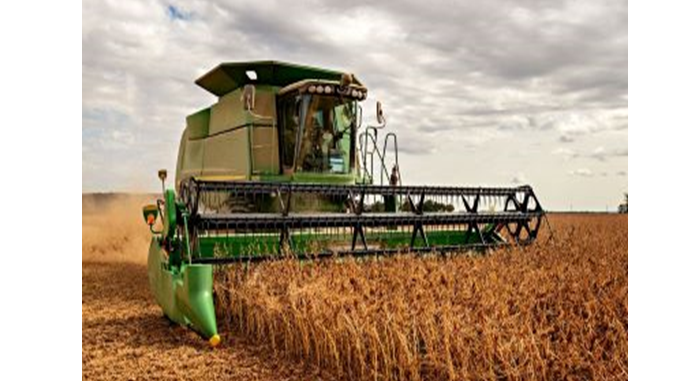Ag Informer – More Valuable Soybeans

By JENNIFER SHIKE September 9, 2022
New research shows soybean meal has more energy content than originally thought. This is good news for pig farmers and soybean growers, says Bob Goodband, professor of animal science at Kansas State University.
Soybean meal is known as an important source of amino acids, critical for protein deposition and growth. But sometimes producers forget that soybean meal also provides energy, Goodband explains.
In a recent K-State study supported by the United Soybean Board, Goodband, in cooperation with Kyle Coble at JBS, discovered increasing soybean meal in the diet actually led to improvements in feed efficiency.
“We fed increasing levels of soybean meal and took out synthetic amino acids,” Goodband explains. “All the ingredients, like corn, vitamins and minerals, stayed the same, except the level of soybean meal, which increased. What happened as we increased soybean meal, feed efficiency improved.”
The diets were formulated with soybean meal assuming 78% of the energy value of corn, or the standard the National Research Council (NRC) reference books would say.
“Feed efficiency was getting better, so there was more energy in the diet. And because the only thing that was changing was the soybean meal, the energy content would be attributed to the increase in soybean meal,” Goodband says.
Their results, looking at calculations based on the improvement in feed efficiency, suggest soybean meal has approximately 105% the energy content of corn.
Hans Stein, professor of animal science at the University of Illinois, agrees the 78% figure in the NRC book is too low. Although he uses a different approach to measure the net energy of a feedstuff, his research has seen a similar trend.
“When we measured net energy of soybean meal, we came up with a value that was 8.5% greater than the book value using our approach,” he says.
The University of Illinois value was not as high as 105% of corn but was closer to 85% to 88% of corn depending on value. Stein says a Chinese study published research on this, too, using a similar approach as the University of Illinois and came up with soybean meal being 91% of the value of corn.
“We are very certain that soybean meal has a higher energy value than the industry has traditionally thought,” Stein says. “Three different groups have measured this and come up with greater values.”
Harvesting soybeans
New research confirms the energy value of soybeans is higher than previously thought.
What’s Changed?
So, the question remains, why was the book value so low? What’s changed?
“It’s not because the researchers who conducted that research 40 years ago didn’t know what they were doing. I think it is more because the pig has changed,” Stein says. “As you know, a pig today is a lot leaner, and has less fat than before. Therefore, a greater proportion of the protein is deposited in the body as energy. That’s my explanation – I cannot prove that.”
He does know the broiler industry is experiencing the same thing.
Goodband believes the improvement could also be due to the composition of the soybeans or that today’s soybean processing methods are producing higher quality meal than in the past.
However, Stein doubts soybeans have changed that much. If anything, he suspects protein in soybeans is a bit lower now than it used to be because yields are so much greater than in the past.
“Across the industry, protein levels in soybeans have gone down a little because they’re pushing yields, and they select for more bushels per acre because that’s the only way producers get paid,” Stein says. “It doesn’t matter how much protein is in that bushel, it doesn’t matter how much fat is in that bushel, growers get paid per bushel. Therefore, breeding companies are pushing yields per acre and that has led to a reduction in protein in the beans.”
Good News for Soybean and Pork Producers
At the end of the day, this new information is good news for agriculture.
“I’m very confident the values are higher than the book values, whether it’s 88%, or 91%, or 95%. I don’t know that for sure, but for sure it’s higher,” Stein says.
K-State has another study in the works that is showing similar results and a nice response in feed efficiency, Goodband says.
“For a pork producer, this information will be helpful for their nutritionists and how they formulate their diets,” Goodband explains. “If you do set a minimum on energy in your diet formulation scheme, you might be adding fat to the diet to meet your desired energy concentration. If the energy content of soybean meal is greater than in the past, this would add value to soybean meal and be a more economical option to added fat.”
For soybean growers, it really increases the value of soybeans – not only as an important amino acid source, but it’s also going to contribute some energy to the diet, Goodband says.
“I think the message for soybean growers is huge because they basically have a product that is worth more than what we have thought in the past,” Stein adds. “If you put in an energy value that is 8% or 10% greater than what they had before, the formulation for sure will pull in more soybean meal. This means there will be a greater demand for soybean meal and there will be more usage of soybean meal.”




